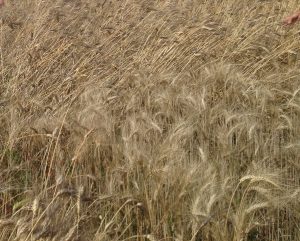Evolutionary plant breeding (EPB)

Evolutionary Plant Breeding (EPB) is a form of plant breeding where the breeding objective consist in creating an Evolutionary Population, as opposed to a homogenous variety or F1 hybrid. Evolutionary Populations (EP) adapt to different agro-ecological environments and to the effects of climate change as they occur, increasing farmers’ long-term climate resilience, whilst enhancing on-farm biodiversity. Initial genetic diversity, selection intensity, and population size, determine the adaptation speed.
The initial genetic diversity can be generated by mixing many different cultivars and landraces (mixtures), or by crossing different parental lines with each other in which case the EP is known as Cross Composite Population (CCP). The number of parental lines can vary from a minimum of 12 to several hundred.
The potential of EPB
Growing demand for nutritious food is coming up against increasing pressure on crops by biotic and abiotic stresses caused by climate change. Future food security in many regions will depend on the ability of harnessing the full potential of small holdings and marginal lands. EPB can assist low input and organic farmers to improve inter-annual yield stability and increase productivity in absence of agrochemical inputs.
High Yielding Varieties (HYV) such as F1 hybrids specifically engineered to withstand synthetic fertilisers without lodging and often requiring the use of pesticides, might not offer the best solution for low-input management and in marginal areas. Furthermore, these varieties lack the adaptability and genetic plasticity of EPs and are more likely to under-perform in the context of high variance in whether patterns, which characterises climate change.
For more information, please visit the Bibliography page
